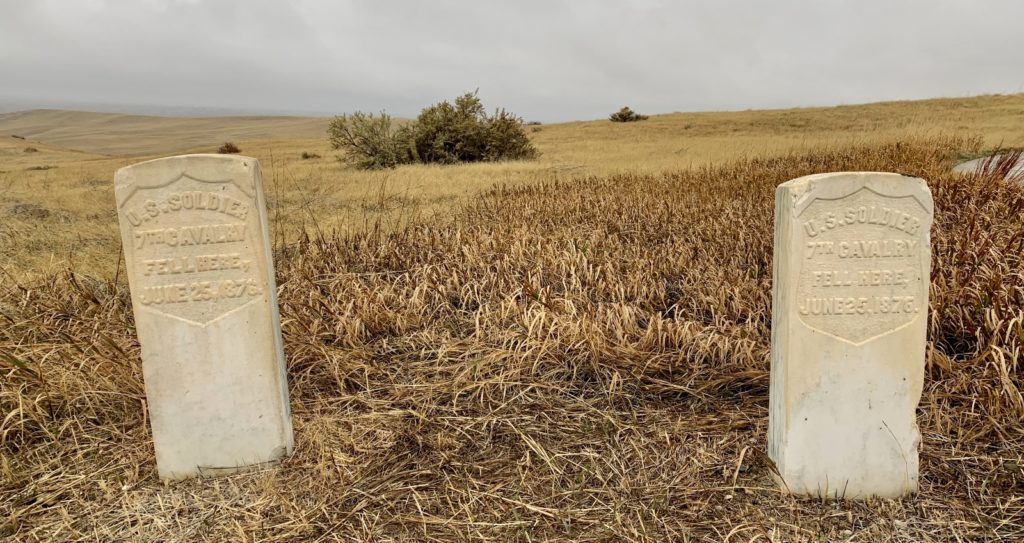
Mother Nature had given us a stern warning—the beautiful days of early fall were being replaced with the first snow storms of the year. After receiving a foot of snow in the Black Hills, we had a reprieve as daytime temperatures quickly rebound into the 60s. But next time we likely wouldn’t be so lucky. It was time to move on while the coast was clear. Our original plan had been to head south toward New Mexico from the Black Hills, but we decided to return home for a visit and to take care of some personal matters before continuing south for the winter.

Departing the Black Hills, we spent our first two nights at Connor Battlefield Historic Site in Ranchester, Wyoming. The Battle of Tongue River took place there in 1865 between U.S. cavalry and Chief Black Bear’s Arapahoe village. Today, the historical site is co-managed by Wyoming State Parks and the town of Ranchester. There are 20 dry camping sites (2 ADA accessible) along an oxbow of the Tongue River at the base of the Bighorn Mountains. All sites are first-come, first-serve. Cost was $18 per night for nonresident. While the Campendium reviews for Conner were mixed, we loved it and would stay again. Some reviewers complained that the restrooms were filthy. We used our own private facilities, so this was a non-issue for us. There was also a complaint about train noise at night. We could hear the train a few times, but did not feel the noise was at all disruptive. To the contrary, we found the area quiet and peaceful. Several of the locals came through on their daily walks and they were very friendly and welcoming.

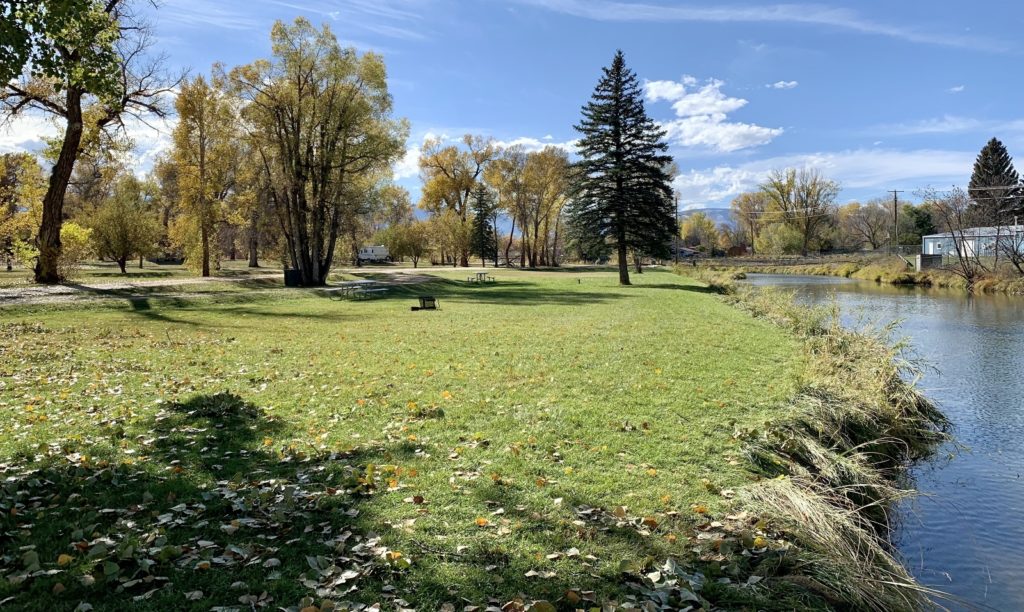
We stayed at Connor Battlefield two nights and used the layover day to venture north into Montana for a visit to Little Bighorn Battlefield National Monument. This National Park Unit memorializes one of the last armed efforts of the Northern Plains Indians to preserve their ancestral way of life. In 1876, 700 men of the US Army’s 7th Cavalry, under the command of Lt. Col. George Custer, attacked the combined forces of the Lakota Sioux, Northern Cheyenne, and Arapaho which numbered an estimated 1,100 to 2,500 warriors. The battle was an overwhelming victory for the tribes. Five of the 7th Cavalry’s twelve companies were annihilated and Custer was killed, as were two of his brothers, a nephew, and a brother-in-law. The total U.S. casualty count included 268 dead and 55 severely wounded. For a detailed account of the battle, click here for a nice summary on the National Park Service’s website.
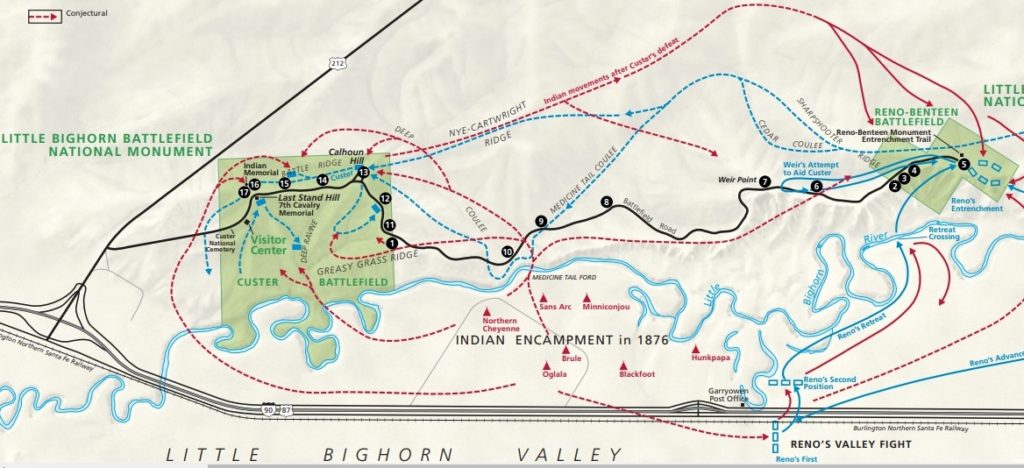
Our visit to Little Bighorn fell on a cold and blustery mid-October day which deterred us from spending as much time on the battlefield as we had planned. But we saw most of what the park has to offer including the museum at the visitor center, Custer National Cemetery, Last Stand Hill, the Indian Memorial, Battlefield Road, and the Reno-Benteen Battlefield. I found the park much more emotionally moving than I had anticipated and I look forward to a return visit under better weather conditions. The most striking part of the battlefield was seeing all of the red and white stone markers scattered across the hillsides. The white marble markers were placed in 1890 to mark the original soldier gravesites. In 1999, red granite markers were finally erected to mark known warrior casualty sites. Seeing so many markers made me acutely aware of how many lives were lost.
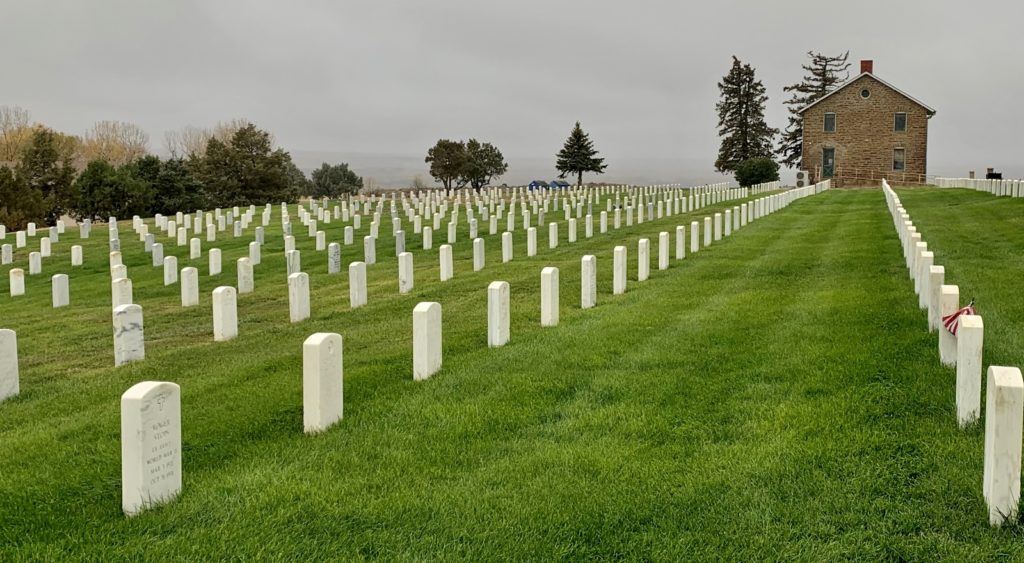
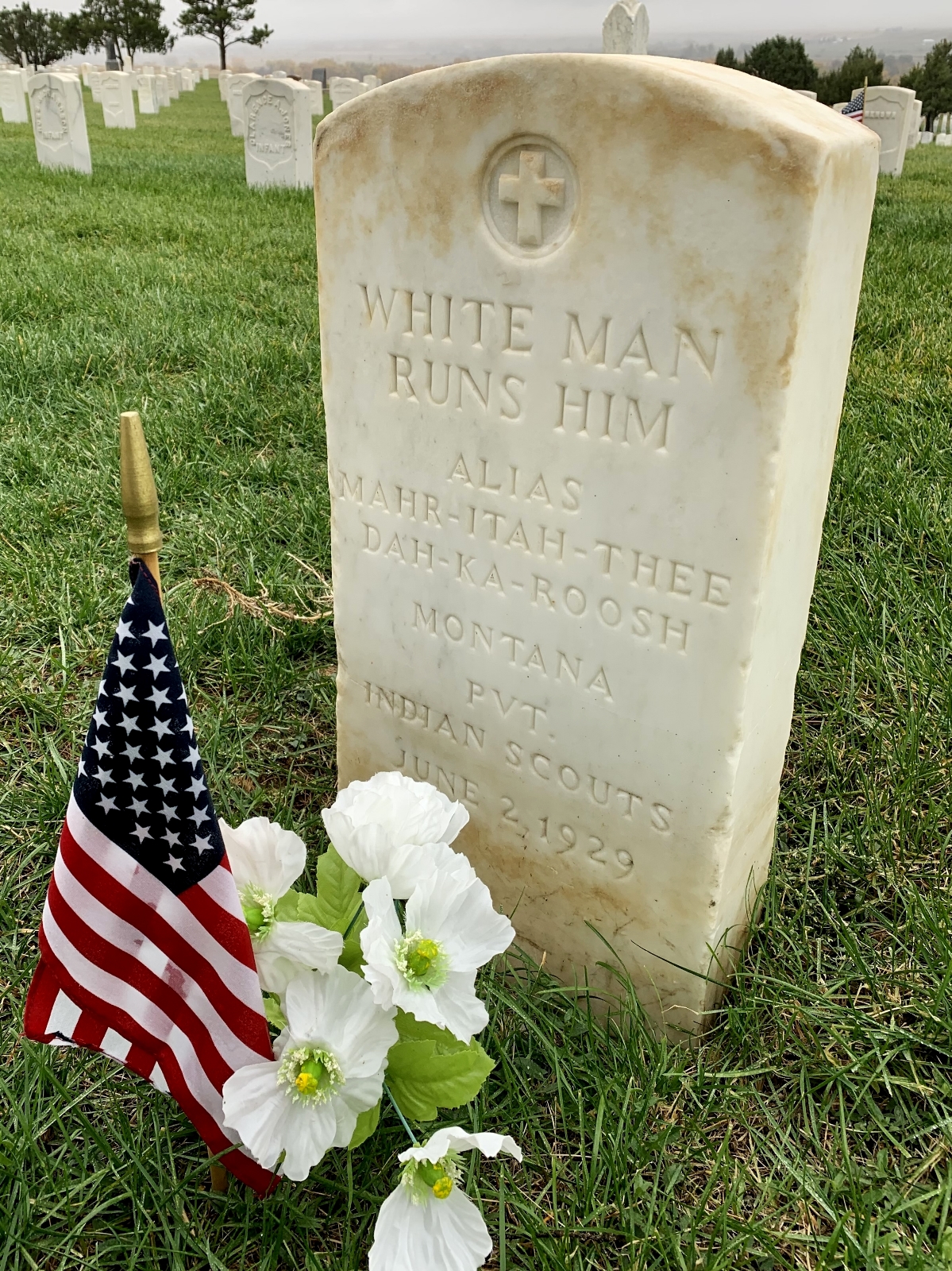
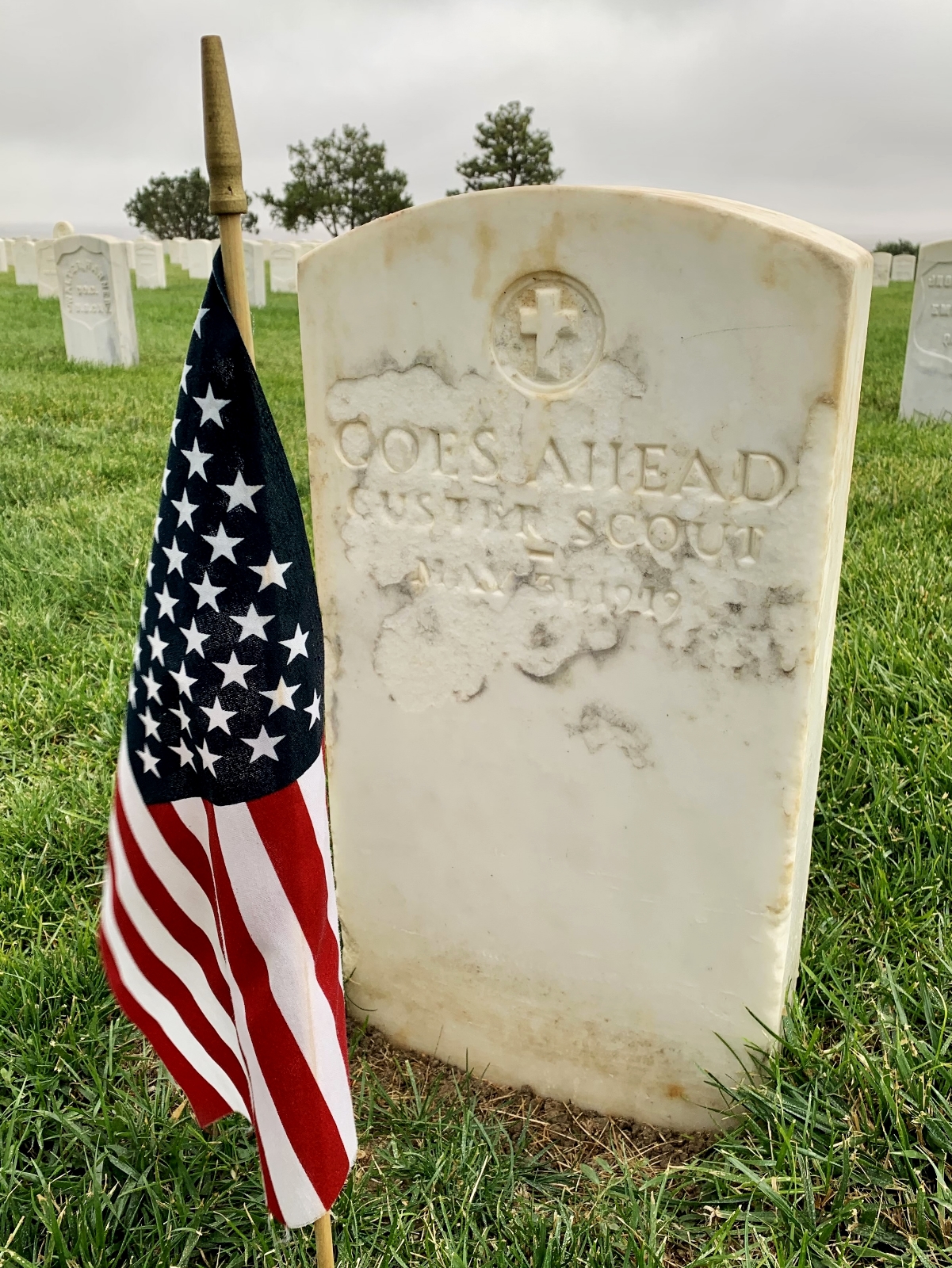
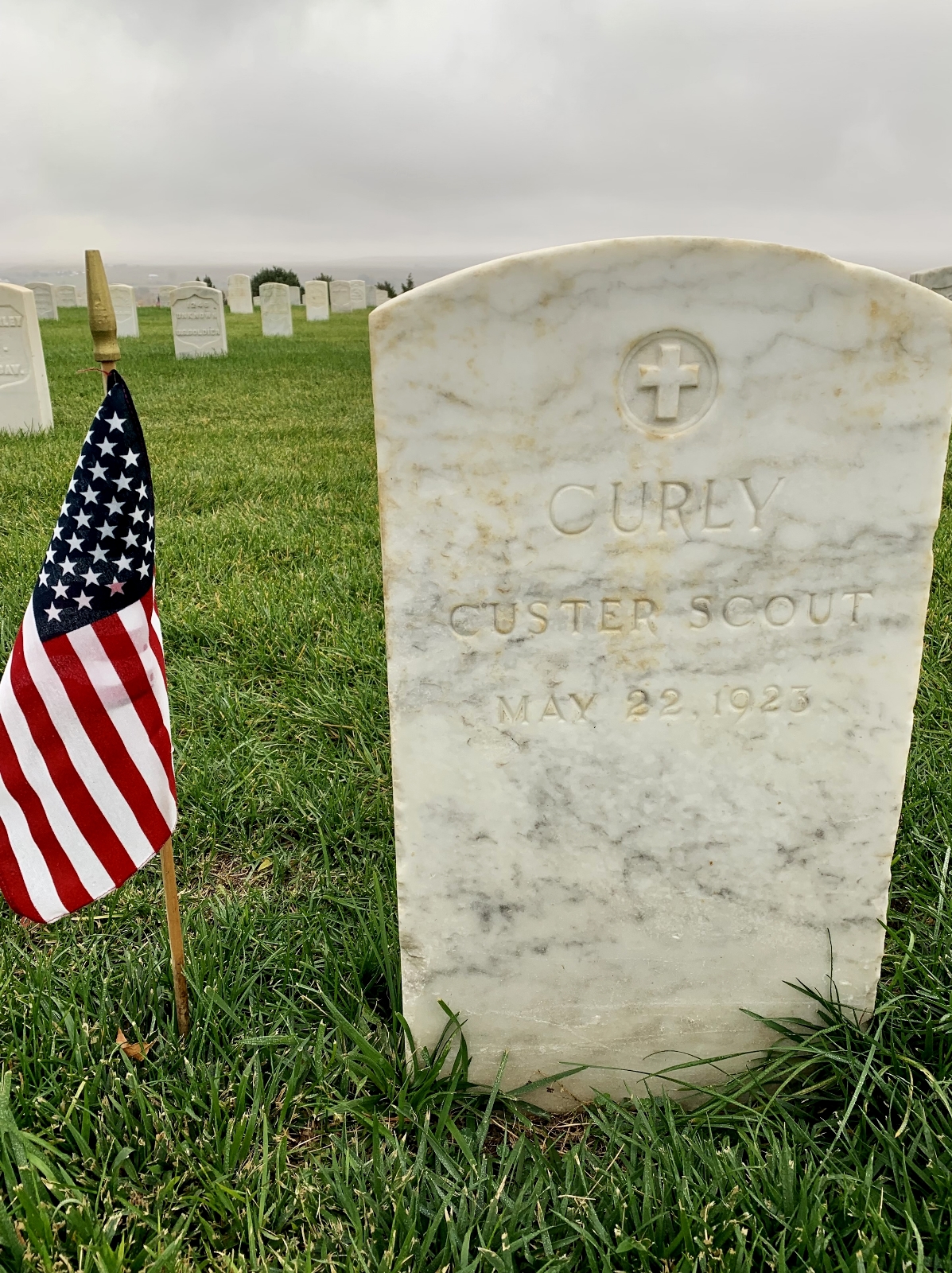
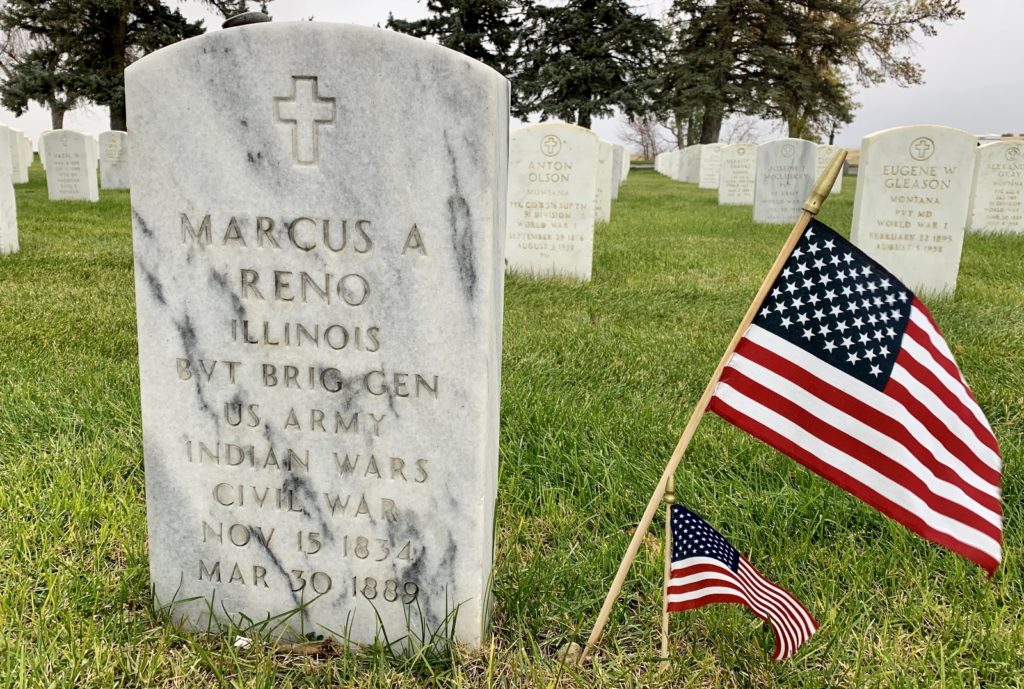
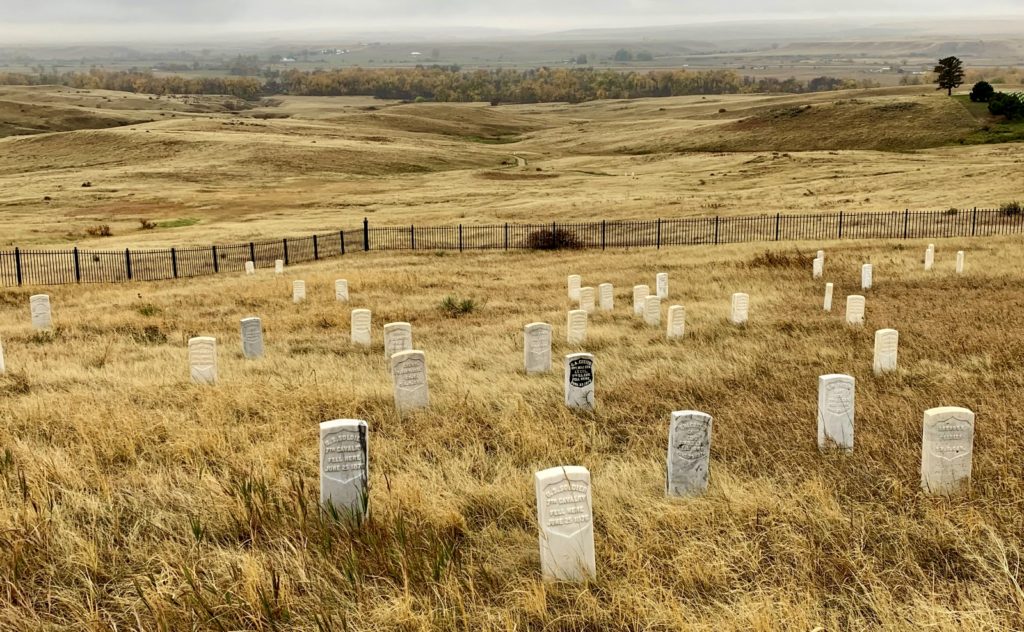
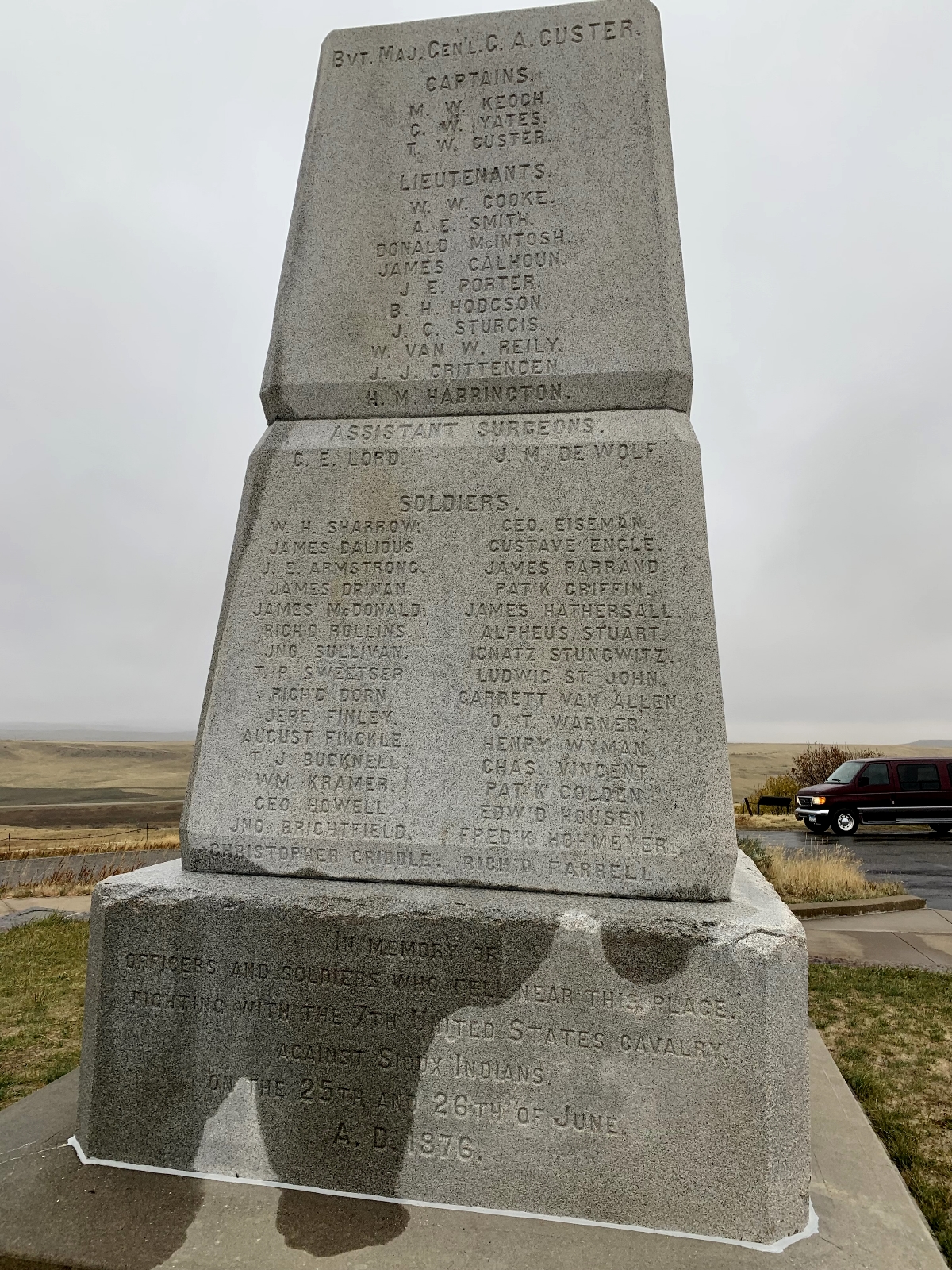
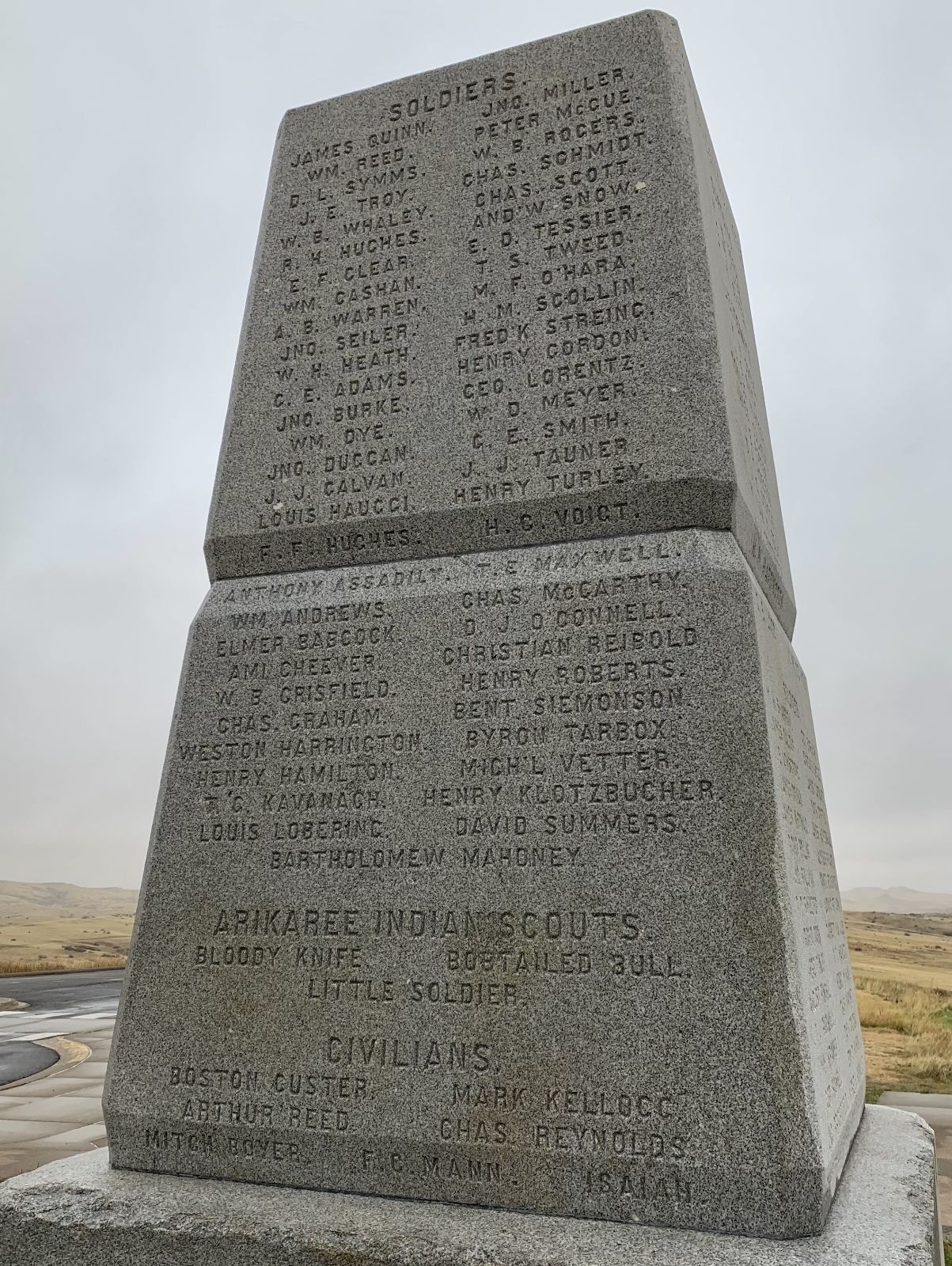
Three days after the Battle of the Little Bighorn, survivors of the 7th U.S. Cavalry under the command of Major Marcus Reno began the task of burying Custer’s command. The men were buried where they fell in shallow graves. In 1877, the partial remains of Custer and many of the officers were re-interred at various location in the eastern U.S. In 1881, a granite memorial was erected on Last Stand Hill. The remains of soldiers and attached personal buried on the field were collected and re-interred in a mass grave around the base of the granite memorial.
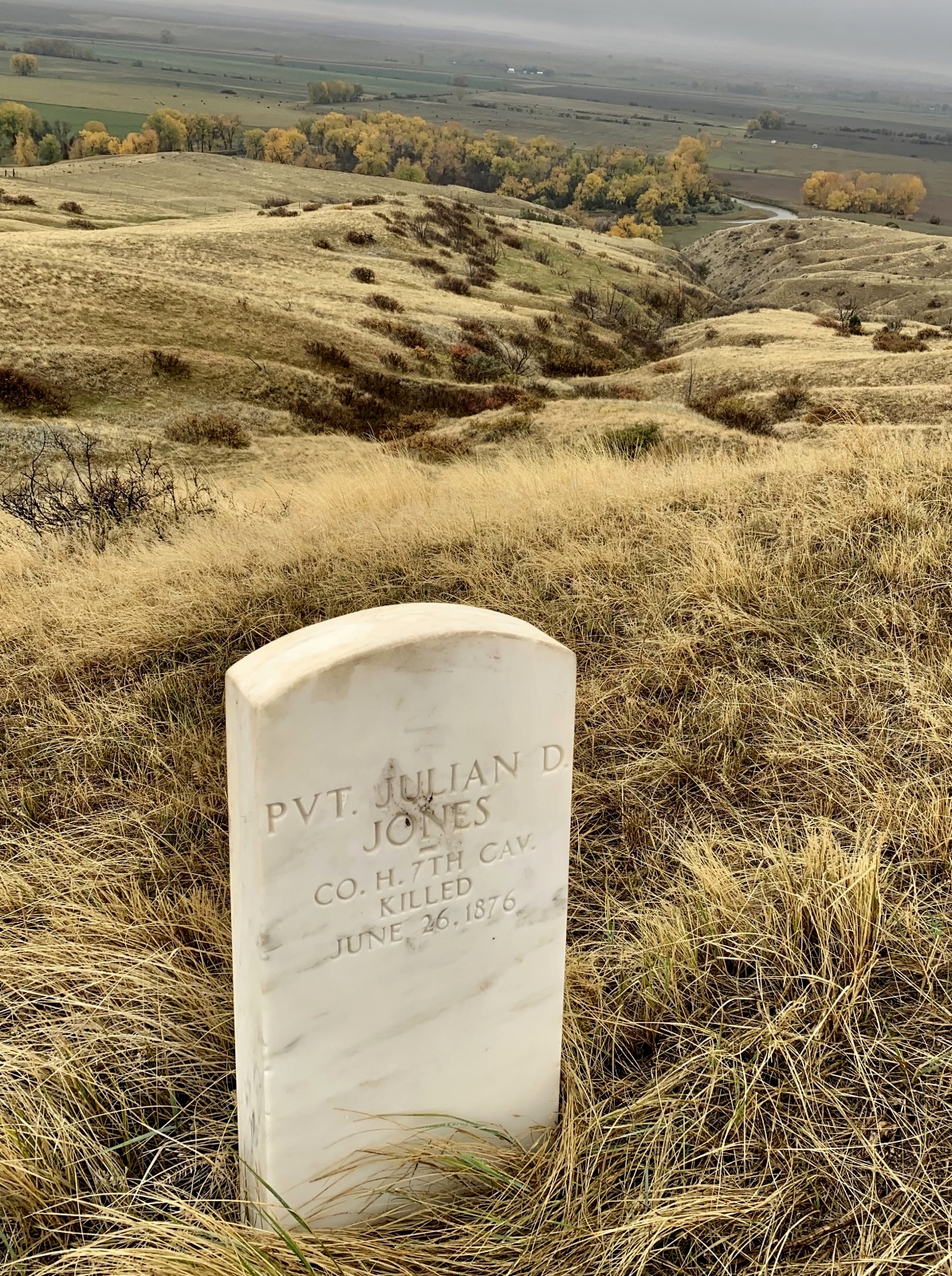
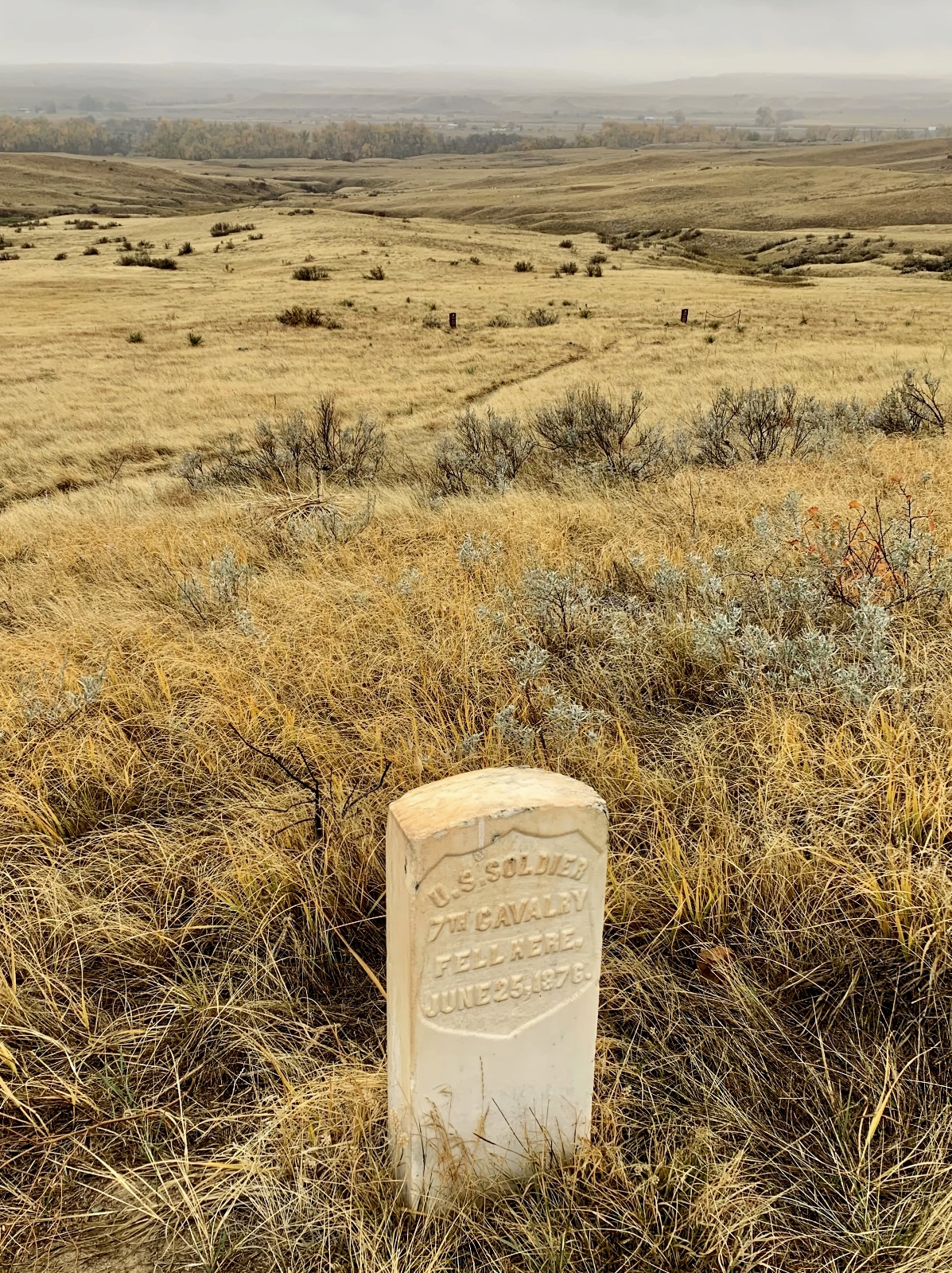
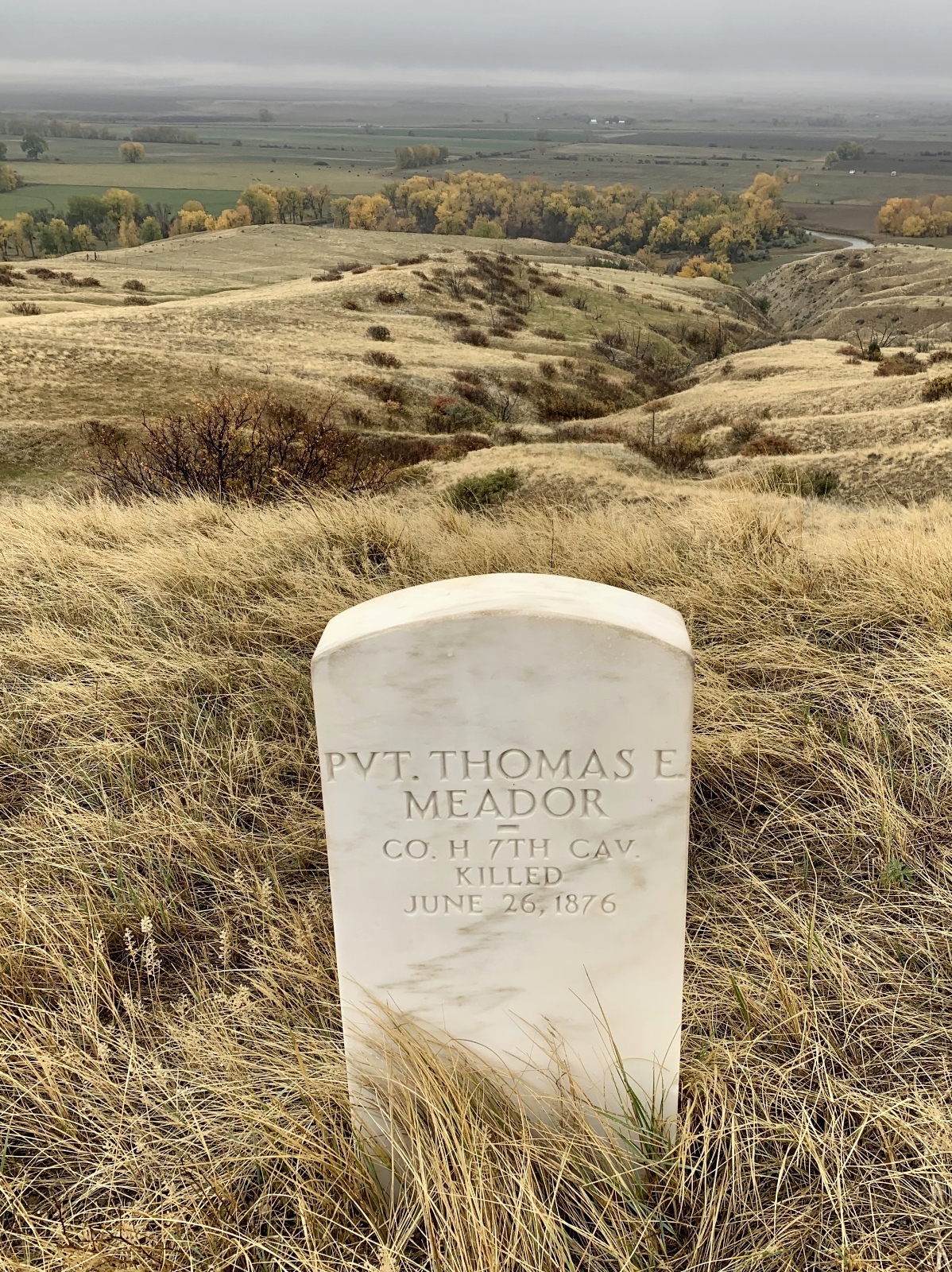
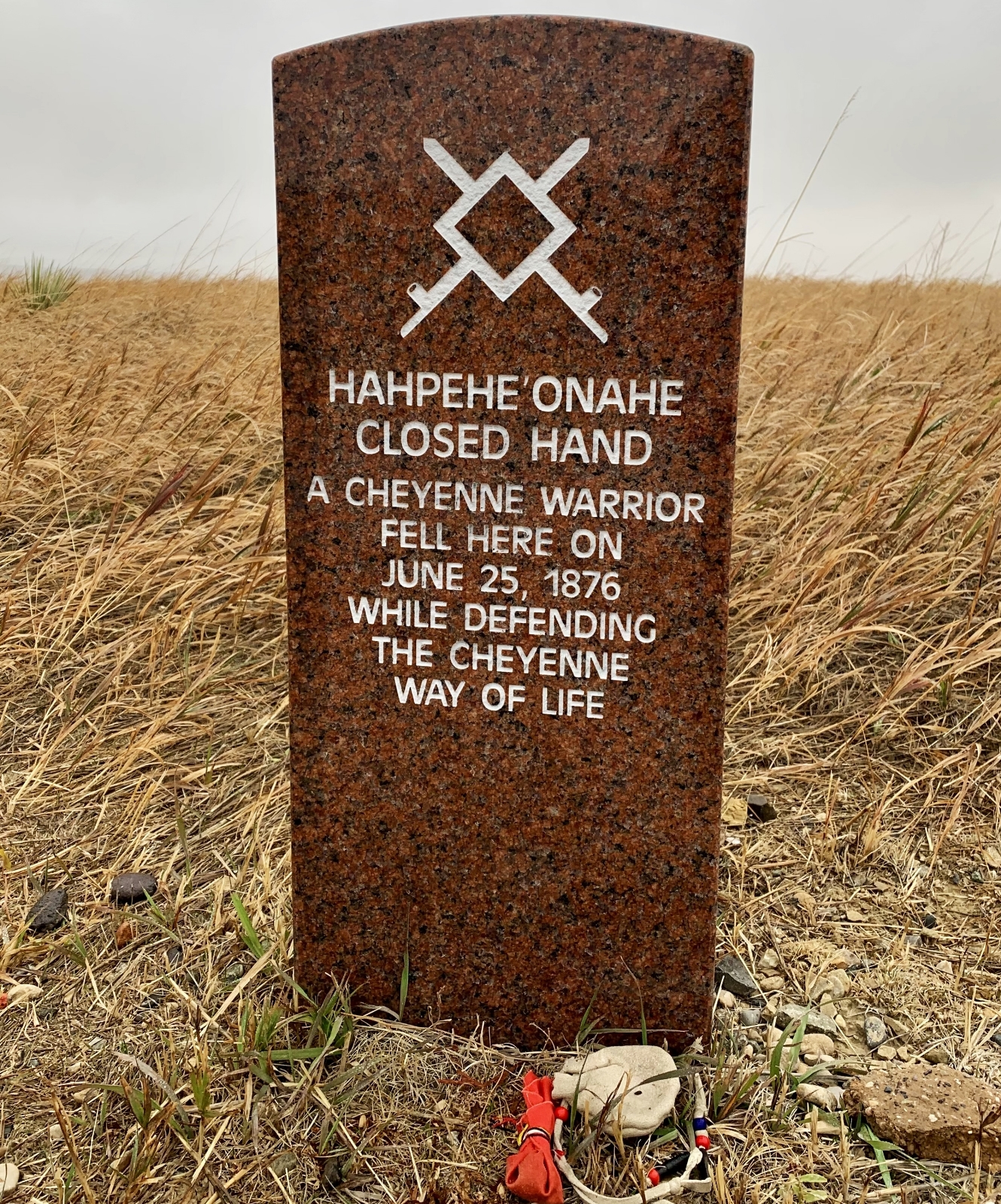
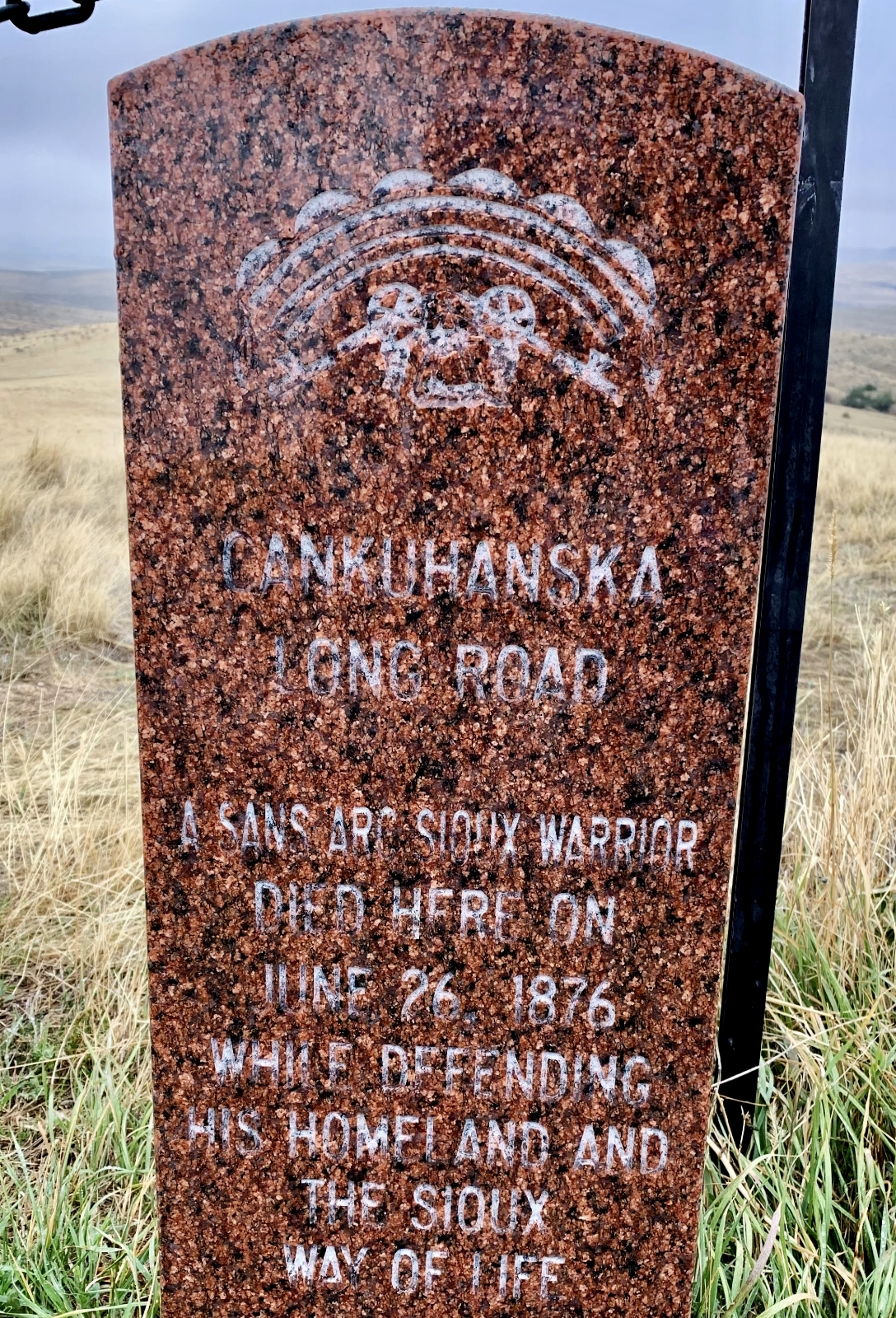
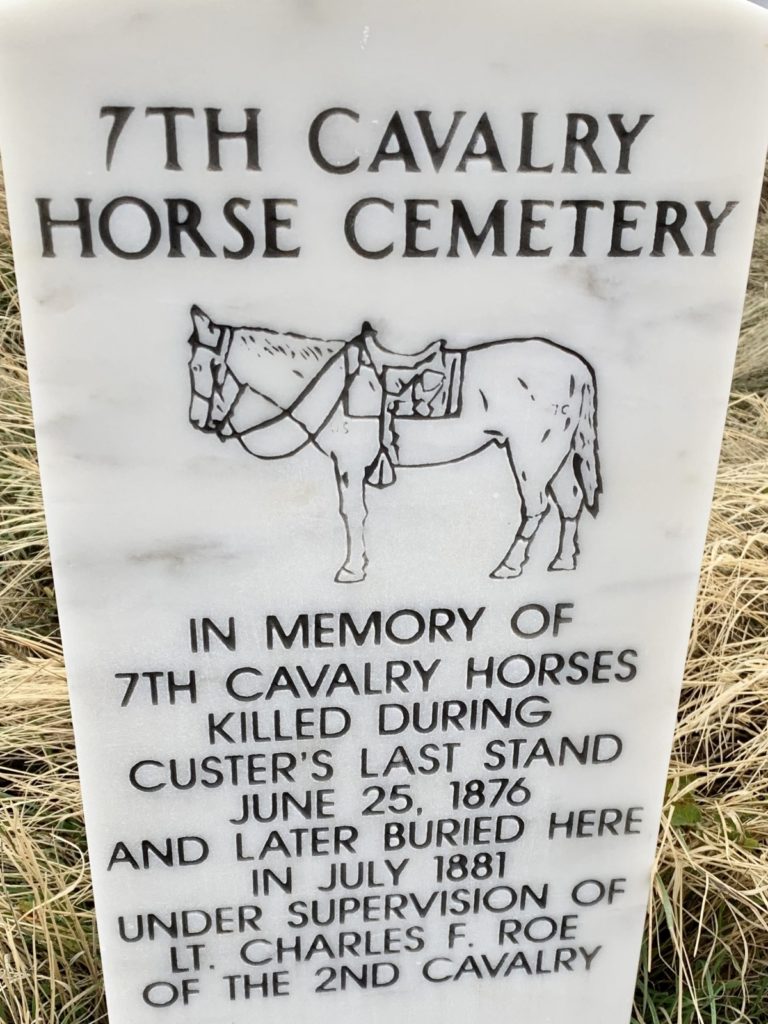
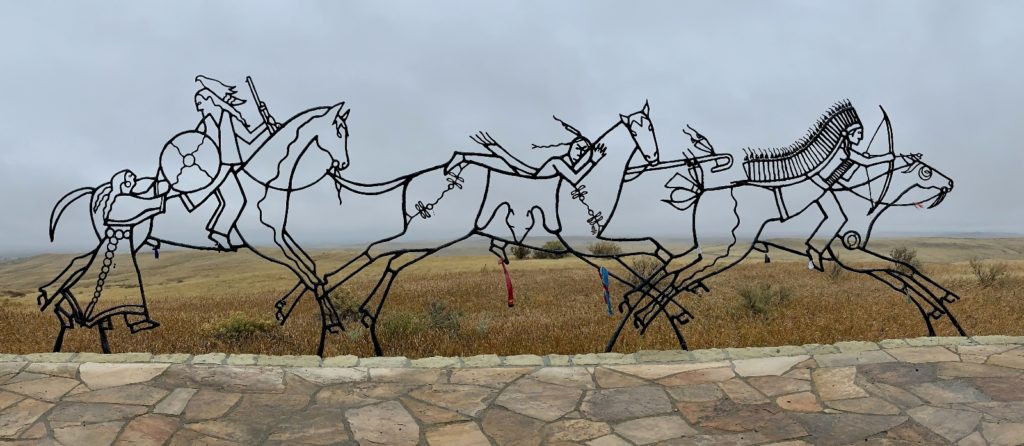
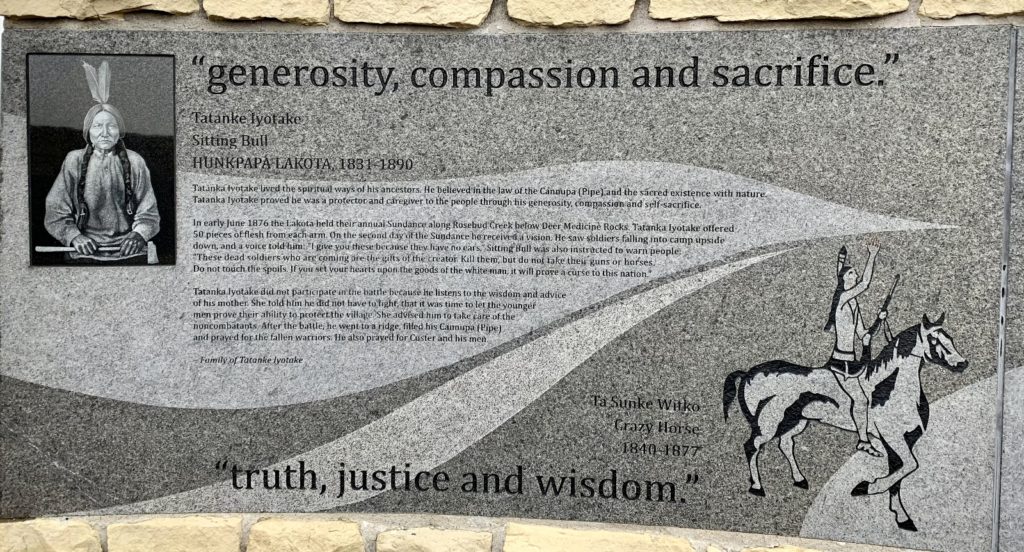
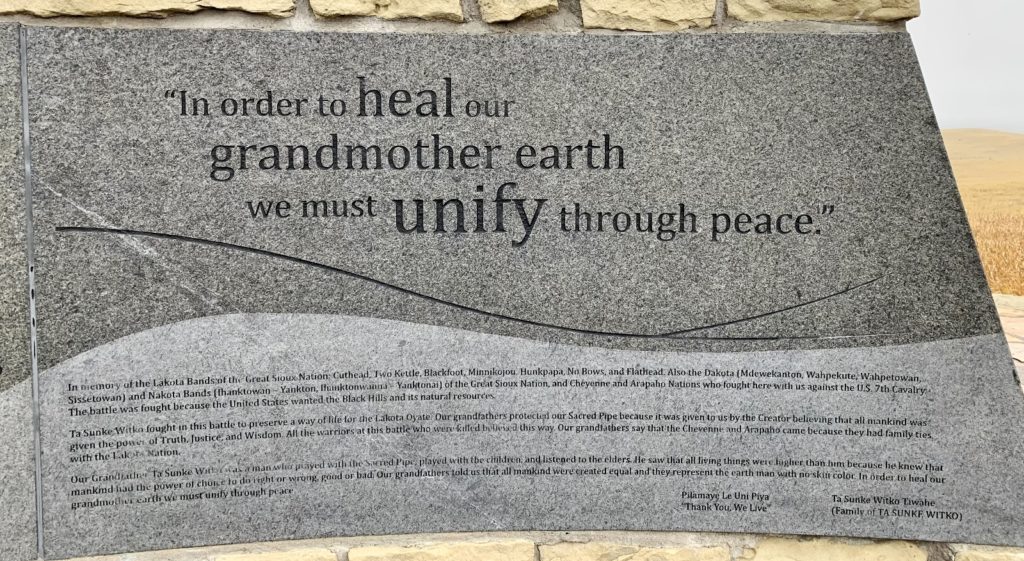
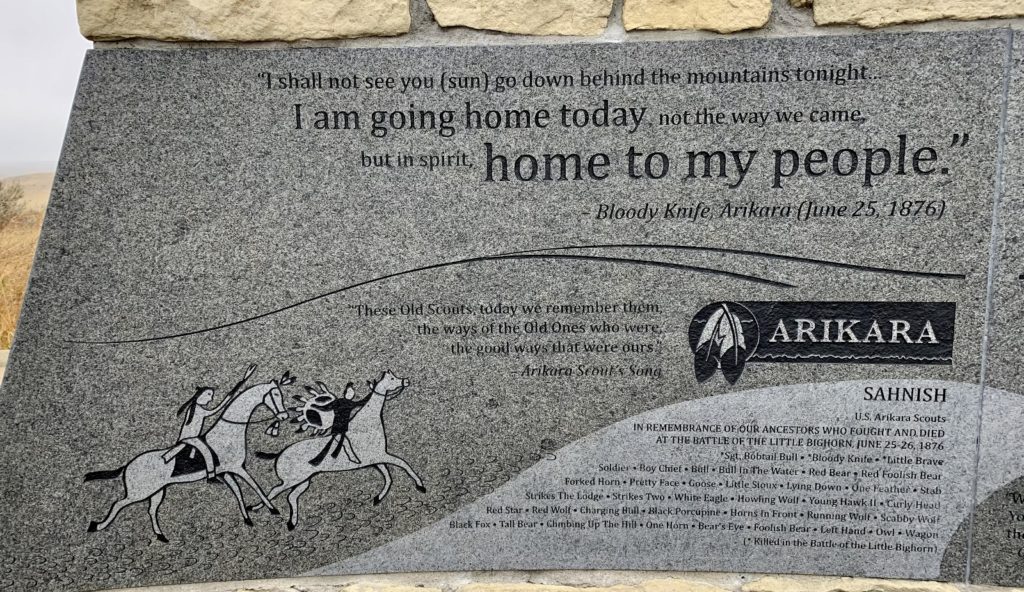
Continuing our journey home, we crossed into Montana on a cold and dreary morning. Our travels that day included a lot of wide open views as we made our way west along I-90. Our home for that night was Lewis & Clark Caverns State Park. We had enjoyed our two nights there back in September and decided it would work great for the last night of our Fall 2021 travels. The campground had been busy back in September, but not so now. We saw more deer than fellow campers during this stay—our kind of crowd. The following day, we enjoyed beautiful weather and fall colors in Western Montana and Central Idaho on the final day of our journey. It was a great seven weeks on the road, but it felt good to be back in our sticks and bricks home that night.
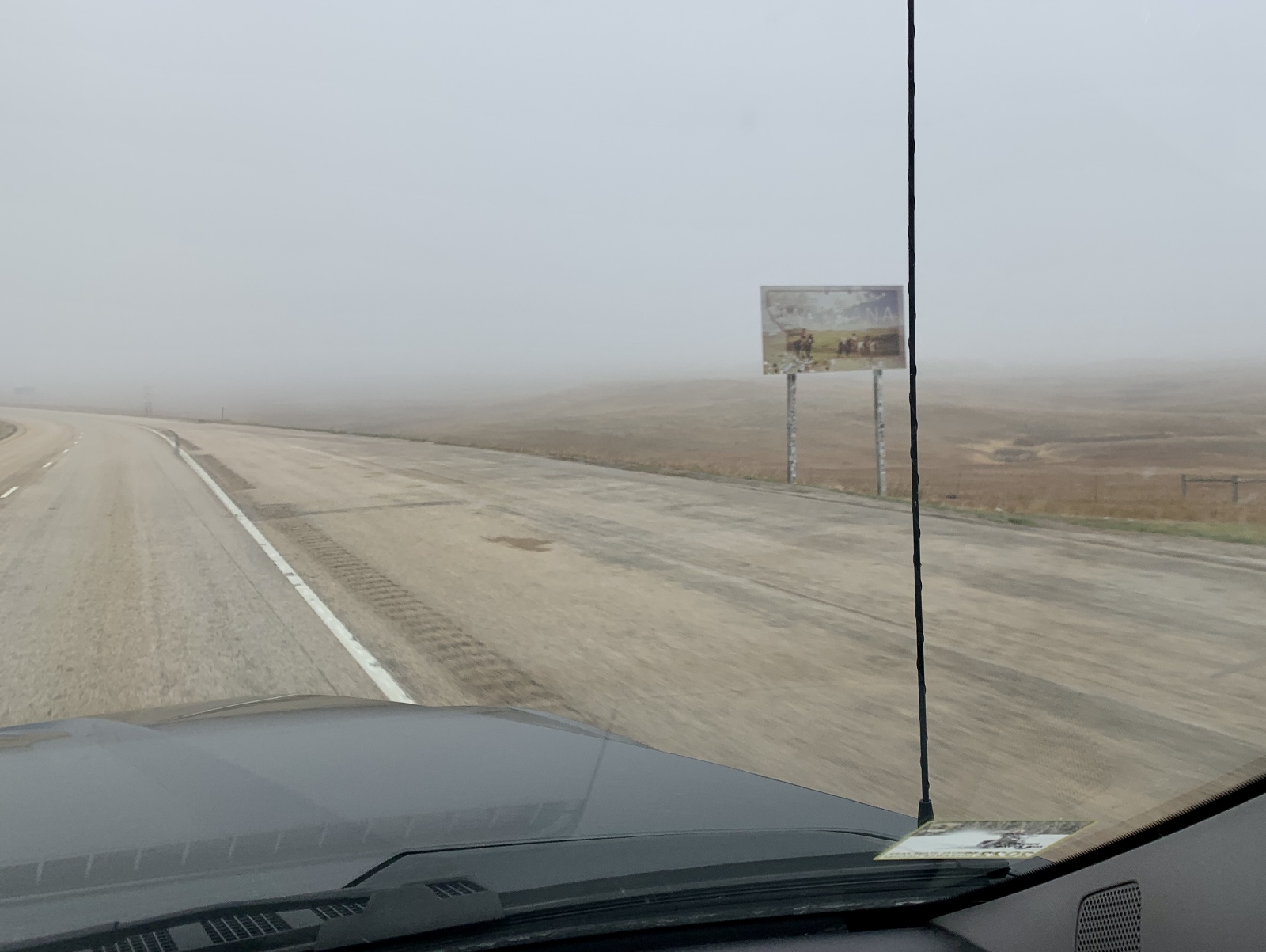





By the Numbers
That wraps up our Fall 2021 Adventures. As always, I like to provide some travel stats and costs. I hope you find them entertaining and useful in your own travels.
Trips Stats:
- Nights out: 49
- Nights dry camping (no hookups): 31
- Nights in free sites: 4
- Coldest night: 20 degrees on October 15th near Hill City, South Dakota
- Warmest day: 96 degrees on September 9th in Bighorn Canyon National Recreation Area, Wyoming
- Total miles driven: 3,899
- Miles towing RV: 2,000
- States visited: Idaho, Montana, Wyoming, & South Dakota
- # of trails hiked: 25
- # of kayak adventure days: 3
- # of ebike adventure days: 5
- Favorite hikes/activities: kayaking in Bighorn Canyon and hiking the Cathedral Spires and Black Elk Peak trails in Custer State Park
- # of photos taken: 3,466
- National Park Units visited: Bighorn Canyon NRA, Devils Tower NM, Wind Cave NP, Jewel Cave NM, Mount Rushmore NM, Badlands NP, Little Bighorn Battlefield NM
Travel Related Costs
| Diesel + DEF | $1,062 |
| Propane | $101 |
| Campsites | $1,144 |
| Meals Out | $493 |
| Dump Fees | $5 |
| Misc. Sightseeing | $186 |
Related Posts
- Preparing for Our 2021 Fall Adventures
- Our 2021 Fall Adventures Begin — Quick Trip Across Idaho & Montana
- Bighorn Canyon National Recreation Area Part 1: Introduction
- Bighorn Canyon National Recreation Area Part 2: Trails & Historic Ranches
- Wyoming’s Bighorn Mountains & Cloud Peak Wilderness
- Devils Tower: America’s First National Monument
- South Dakota’s Black Hills
- South Dakota’s Spearfish Canyon Scenic Byway
- George S. Mickelson Trail: Rail-to-Trail Hall of Fame
- Jewel Cave National Monument & Wind Cave National Park
- South Dakota’s Custer State Park
- Hiking the Tallest Peak East of the Rockies
- The Black Hills Get Buried in Snow!
- Wrapping up South Dakota With a Day at Badlands National Park
The Adventure Continues
Be sure to join us next time for the start of our Winter 2021-2022 adventures! And don’t forget to check out our Amazon RV and Adventure Gear recommendations. We only post products that we use and that meet the Evans Outdoor Adventures seal of approval. By accessing Amazon through our links and making any purchase, you get Amazon’s every day low pricing and they share a little with us. This helps us maintain this website and is much appreciated!
Very interesting and WONDERFUL piictures!
Hello my name is Patrick tumilty I am a historian I love the history of the battle of the Little bighorn and I just want to say thank you for the beautiful pictures those pictures are magnificent I love seeing The monuments with the names on them were curly died and of course the last stand Hill and lieutenant Colonel George Armstrong Custer his brother Thomas and also there was Boston and Audie reed their monuments are way way far they’re about 200 300 ft away from where brother George and Thomas are Audi and Parsons tombstone on the battlefield like right hand corner way down far far down almost almost not on the monument almost out almost out of the gate outside the gate I think it’s like 200 ft or 200 yards or something I think it’s 200 ft away from the top of the hill last stand Hill
Thank you for the kind words, Patrick. And for the additional information. It is such a special place there and I found all the individual markers to be particularly photogenic. I would love to visit sometime in the spring when everything is green and maybe some wildflowers.
Lusha
Parson is supposed to be Boston Custer he is the third of the Custer’s Brothers the baby his name is not parson or Parsons it’s a Boston Custer